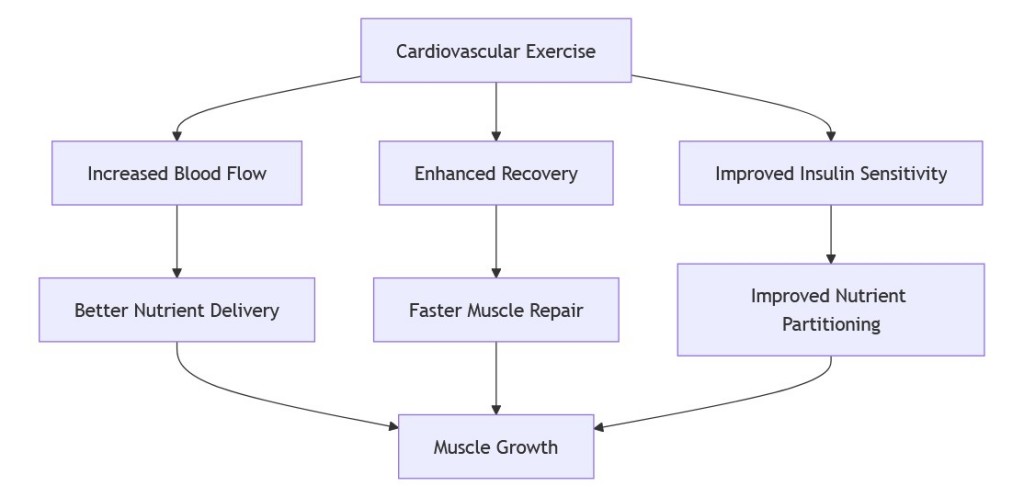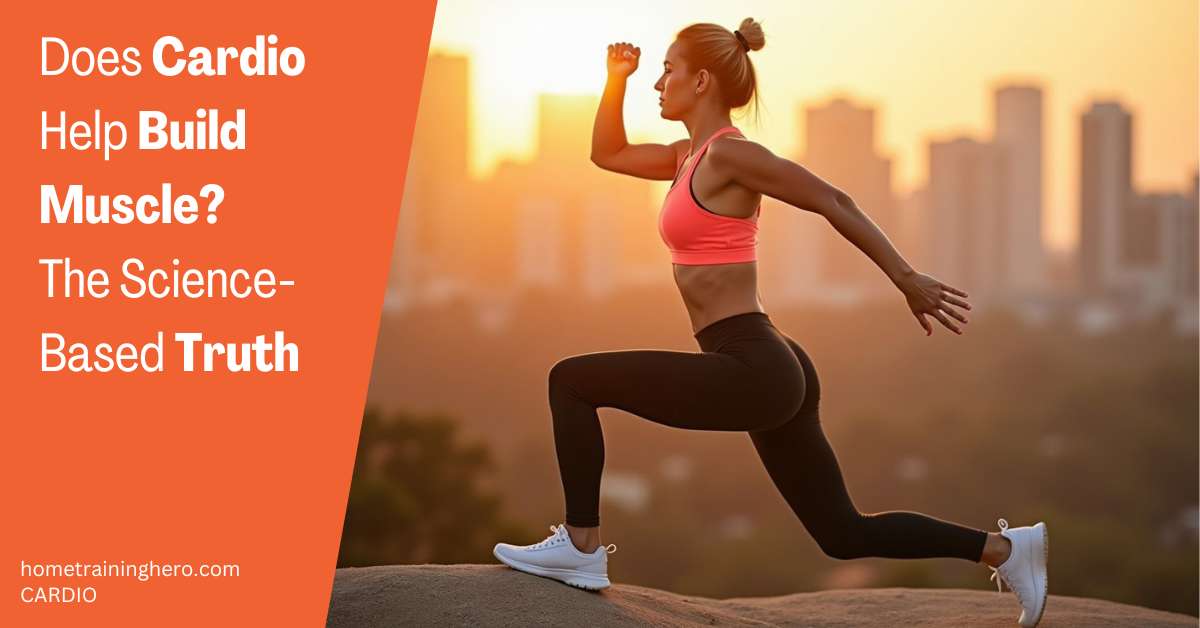Forget everything you’ve heard about cardio killing your gains.
Whether you’re a dedicated lifter or just starting your fitness journey, understanding the relationship between cardiovascular exercise and muscle growth is crucial for optimizing your results.
Let’s dive into the science-backed truth about how cardio can actually enhance your muscle-building efforts.
Contents
The Cardio-Muscle Connection: Breaking Down the Science

The relationship between cardio and muscle growth isn’t as simple as many think. When properly programmed, cardiovascular exercise can significantly enhance your muscle-building potential through several mechanisms:
- Enhanced Blood Flow: Regular cardio improves capillary density in your muscles, leading to better nutrient delivery and waste removal.
- Improved Recovery: Moderate-intensity cardio increases blood flow to damaged muscle tissues, potentially accelerating recovery between strength training sessions.
- Better Nutrient Partitioning: Cardiovascular exercise can improve insulin sensitivity, helping your body better utilize nutrients for muscle growth.

Types of Cardio That Build Muscle
Not all cardio is created equal when it comes to muscle building. Here’s a comparison of different cardio methods and their impact on muscle growth:
| Type of Cardio | Muscle-Building Potential | Recovery Impact | Time Efficiency |
|---|---|---|---|
| HIIT | High | Moderate | Excellent |
| Steady-State | Low-Moderate | Excellent | Moderate |
| Sprint Training | High | Challenging | Excellent |
| Cycling | Moderate | Good | Good |
| Swimming | High | Excellent | Good |
The Sweet Spot: How Much Cardio Is Optimal?
The key to using cardio for muscle building lies in finding the right balance. Here’s how to optimize your cardio for muscle growth:
- Keep high-intensity sessions to 20-30 minutes
- Maintain 2-3 cardio sessions per week
- Space cardio and strength training by at least 6 hours
- Focus on low-impact forms of cardio when training legs
For detailed guidance on structuring your workouts, check out our 3-day workout plan that effectively combines both cardio and strength training.
Nutrition: The Missing Link

To build muscle while doing cardio, you need to pay special attention to your nutrition. The increased caloric burn from cardio must be compensated for to maintain a surplus conducive to muscle growth. For a comprehensive approach to nutrition and training, explore our 6-week diet and workout plan.
Best Practices for Combining Cardio and Strength Training
- Timing Matters: Separate cardio and strength sessions when possible. If you must do both in one day, prioritize your primary goal (strength or cardio) by doing it first.
- Choose Complementary Activities: Select cardio activities that don’t interfere with your strength training. For instance, if you’re focusing on leg development, consider upper-body cardio, like rowing or swimming.
- Monitor Recovery: Pay attention to your body’s response and adjust accordingly. Learn more about exercise and recovery.
FAQ
Q: Will cardio diminish my muscle gains? A: No, when properly programmed, cardio can enhance muscle growth through improved recovery and nutrient delivery.
Q: How often should I do cardio while building muscle? A: Aim for 2-3 sessions per week, keeping intensity moderate and duration reasonable (20-30 minutes for HIIT, 30-45 minutes for steady-state).
Q: What’s the best type of cardio for muscle building? A: HIIT and sprint training tend to be the most beneficial, but the best type depends on your overall fitness goals and recovery capacity.
Take Action
Ready to optimize your training? Start by incorporating one cardio session per week into your routine, gradually increasing based on your recovery and progress. Remember, the goal is to enhance, not hinder, your muscle-building efforts.
For more information on specific cardio exercises and their benefits, check out our guides on HIIT workouts and cardio benefits.


